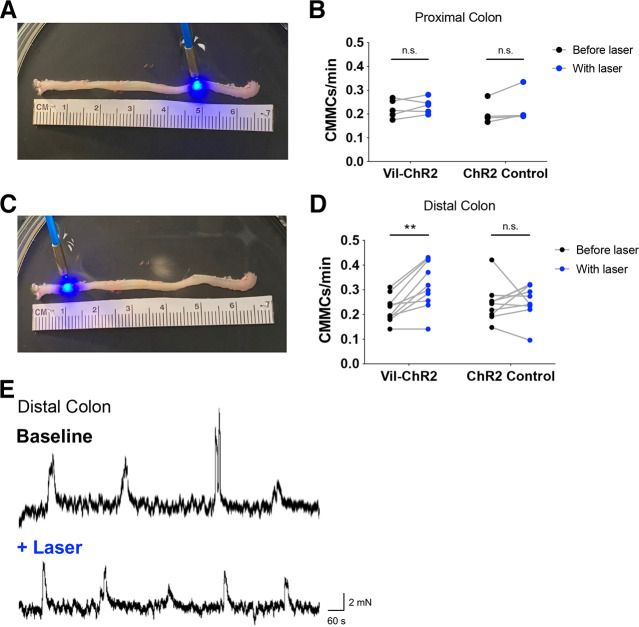Figure 6.
Optogenetic activation of the epithelium in the distal colon facilitates CMMCs. A: video recordings captured CMMCs at spontaneous baseline levels and with the application of blue laser to the proximal colon (right side), 5 cm from the anus. Changes in CMMC rate (No. of events in 20 min) were quantified in Vil-ChR2 (n = 5 mice) and control littermate mice (n = 4 mice). B: blue light stimulation of the proximal colon epithelium did not change the rate of CMMCs in the Vil-ChR2 mice nor in control mice. There was no significant interaction between genotype and laser in these experiments (P = 0.49; two-way ANOVA). C: laser stimulation was repeated in the distal colon (left side), 1 cm from the anus. Changes in CMMC rate were quantified in Vil-ChR2 (n = 10 mice) and control littermate mice (n = 10 mice). D: blue light activation of the epithelium in the distal colon increased the rate of CMMCs in Vil-ChR2 mice (P = 0.001; Sidak’s test). The rate of CMMCs in the control mice did not change (P = 0.88; Sidak’s test). E: CMMC events were verified using a force transducer that measured changes in tension (milli-Newtons) during CMMCs. These example traces show CMMC rate at baseline and then with the addition of laser in the distal colon. **P < 0.01. ChR2, channel rhodopsin; CMMCs, colonic migrating motor complexes; n.s., not significant.

